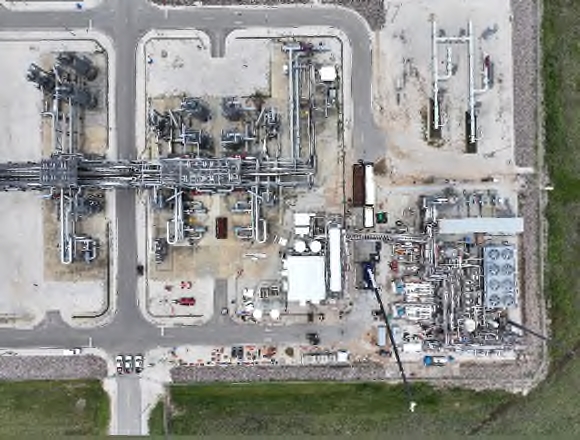Freeport LNG, the operator of the 15 mtpa liquefaction plant in Texas, is seeking an extension of time from the US FERC to construct and place into service its Noble gas project.
Back in June 2021, FERC granted approval to Freeport LNG’s units for the project which will recover helium from a residual gas stream at Freeport LNG’s Oyster Creek pretreatment facility in Brazoria County, Texas.
The order required Freeport LNG to complete construction of the project and make it available for service within three years of the date of the order, or by June 21, 2024.
According to a FERC filling, Freeport LNG’s units requested on August 8 that FERC grants an extension of time.
Freeport LNG states that the only jurisdictional construction activity of the project that remains to be completed is the ongoing Phase 3 firewater work.
According to the LNG terminal operator, it has not been able to complete and place the project in-service by the deadline due to third-party delays with the non-jurisdictional Helium plant, which is being constructed by Linde Global Helium and is outside of Freeport LNG’s control.
Freeport LNG said that Linde’s progress has been affected by the market availability of certain equipment, having to make engineering changes based on newly received data, and Hurricane Beryl.
Additionally, Linde has indicated that it anticipates placing the non-jurisdictional facilities in-service by the end of 2024.
Freeport LNG reiterates that its final work on the jurisdictional facilities cannot be completed until the Helium plant is ready to receive the boil-off gas from Freeport LNG.
Therefore, Freeport LNG requests a nine-month extension of time to construct and place its project in-service by no later than March 21, 2025, it said.
First of its kind in US
According to Freeport LNG’s website, the Noble gas project will be the first of its kind in the US, and will help address a growing shortage of helium.
The project will extract helium from the BOG pipeline, and requires tie-ins to the existing BOG pipeline, firewater system, nitrogen header, and electric supply at the pretreatment facility.
Freeport LNG said the project is not required for the liquefaction of natural gas but is a separate product stream for commercial purposes.
Extraction of helium associated with the production and storage of LNG is one of only three ways that helium can be captured, it said.
The project will tie into Freeport LNG’s existing BOG line to allow for helium extraction without disruption to LNG operations.
Also, the majority of domestic helium is used in the cooling of magnets in magnetic resonance imaging (MRI) machines for medical diagnostics, in space exploration, and in defense systems.
“The project promotes economic efficiency by capturing a finite resource that would otherwise be lost and allow it to be used for a more beneficial purpose,” Freeport LNG said.

